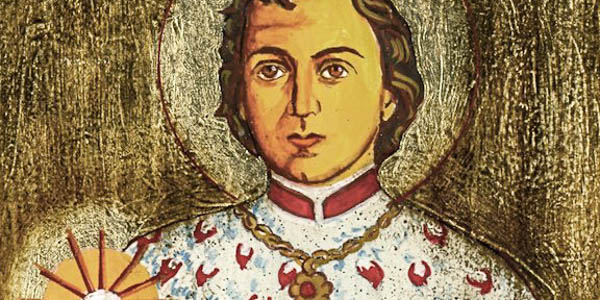There is a city in Minnesota named St. Cloud; population 66,247. There is also one in Osceola County, Florida; population 40, 918. The state of Wisconsin has its city of St. Cloud; population 461. Finally, if we head to Missouri, the “show me state,” they can show us their own town of St. Cloud; population 41. It is 1.2 miles square, so pay attention or you may miss it.
But who was St. Cloud? Where did the name come from? Was there ever such a person? Is he really a saint of the Catholic Church?
Yes, there was such a person, and he is a saint. But his real name was Clodoald. Eventually, people started calling him “Cloud.” He is known as St. Cloud or St. Clodoald. (St. Cloud is much easier).
Cloud’s early life might be compared to a modern daytime soap opera. Cloud was the grandson of King Clovis of the Franks (the Germanic tribes that had invaded the Roman empire in the 5th century). The Franks established the strongest Christian kingdom in early medieval Europe, and the name France comes from the word Franks.
After King Clovis’ death, Cloud’s father, Clodomir, became king. He was killed in 524 and Cloud’s uncle, Clotaire, desperately wanted to be king. Consequently, he hated Cloud and his two brothers, Theodoald and Gunther. Clotaire managed to kill the brothers, (ages 10 and 9), but Cloud’s grandmother, Queen Clothilde, managed to flee with Cloud.
Cloud, raised in seclusion by his grandmother, was able to survive the threats against him. By the time he was a young man, he had decided to renounce any wealth or power because of the pain and grief it had brought to his family.
Read more:
Pope Francis: Acceptance of the Lord’s Love Frees Us from the Seduction of Riches
He began to live the life of asceticism and prayer. He gave all his wealth to the poor and became a disciple of the hermit Severinus in a place called Nogent, near what is now the city of Paris. Today Nogent is known as Saint-Cloud.
As time went by, Cloud was feeling less threatened and decided to go to the bishop of Paris to express his desire to enter the religious life. He was accepted into his new life and, after having his long hair cut off signifying his rejection of his Frankish background, received the habit of a monk. In due time Cloud left Nogent and became a hermit. He wanted to develop a contemplative life, getting closer to God while studying Scripture.
People heard about the hermit living near Paris and they began coming to him see seeking advice and counsel. In due time the word spread of miracles happening as a result of Cloud’s prayers and so many people began coming to see him, preventing him from remaining a hermit.
He returned to Paris and, as his reputation had preceded him, he was welcomed by the people with open arms. The people clamored for Cloud to become a priest and he was ordained by Bishop Eusebius of Paris, in 551.
Father Cloud served the community there for a long time. Then after some years, he established a monastery on the Seine River near present-day Versailles. Named Novigentum initially, it was eventually renamed Saint-Cloud in Clodoald’s honor. Today this monastery is a seminary for young men studying for the priesthood.
There are relics from St. Cloud at the monastery and the four towns in America that are named St. Cloud are named after the French town of Saint-Cloud.
St. Cloud’s feast day is September 7.
St. Cloud, please pray for us.

